#Order: Orthoptera
Text
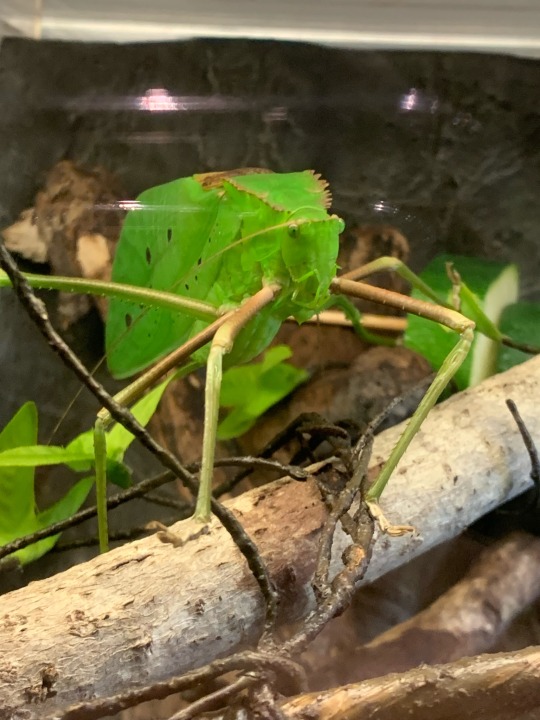
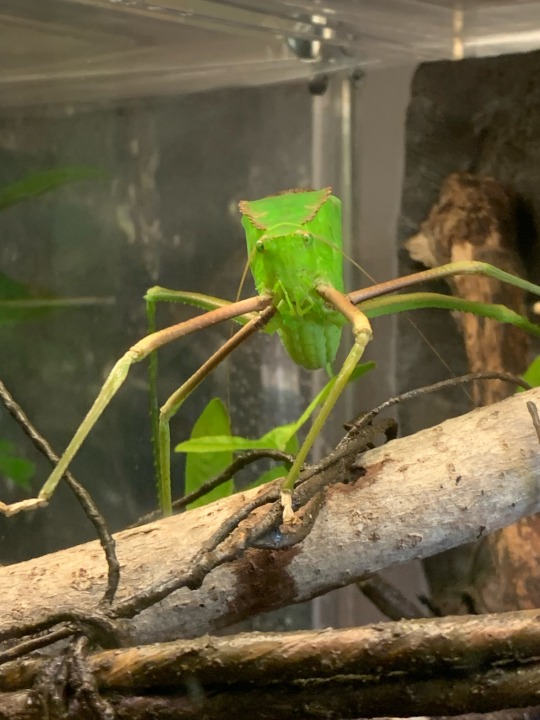
The Giant Katydid… what a chonker!
#Phylum: Arthropoda#Class: Insecta#Order: Orthoptera#Suborder: Ensifera#Family: Tettigoniidae#Genus: Stilpnochlora#Stilpnochlora couloniana#giant katydids#katydids#insects
0 notes
Text
I PINNED BUGS TODAY

9 notes
·
View notes
Note
Oh oh also!!! patron saint of identifying insects perhaps? Soups/stews and insect identification !
omg that's so fun. i would LOVE to be a master at insect ID
[ask meme]
#sasha answers#ask meme#kerfluffel#i'm pretty good at some local insects especially lepidoptera (they r my faves)#and Some hemiptera. but i should get better at other orders....#heteroptera orthoptera and mantodea would be good places to start i think.#cause i don't think there are that many different species of mantis or grasshopper around here and wasps and bees are just cool. ANYWAY#my latent interest in Bugs has been awakened tonight thanks for that (positive)
6 notes
·
View notes
Text
Taxonomy Tournament: Insects


Phasmatodea. This order is made up of insects that mimic plants. Members include stick insects and leaf-bugs
Orthoptera. This order has elongated hindlegs adapted for jumping. Members include grasshoppers, crickets, and katydids.
#animals#biology#polls#poll tournament#zoology#stick insects#leaf bugs#arthropods#insects#ecdytes#grasshoppers#crickets#katydids#Phasmatodea#Orthoptera#0x42v0xbd#animal tournament#Animal Tournament Round 1
414 notes
·
View notes
Text
i can only put ten answers so i am sorry to everyone i could not represent!
1K notes
·
View notes
Text
Bug poll time NOW
#polls#bugs#insects#i know there’s a lot more but these are just some big name ones#didn’t feel like including a bunch of other fly types#plz rb#beetles#flies#ants#bees#wasps#dragonflies#damselflies#butterflies#moths#true bugs#cicadas#aphids#crickets#grasshoppers#mantids#cockroaches#termites#stick insects#mayflies#upwing flies
25 notes
·
View notes
Text

Today's anime insect of the day is: A cricket from Dororo
Order: Orthoptera
Family: Gryllidae
143 notes
·
View notes
Text
#made a better insect poll because fucka you . also obligatory hemiptera is more complicated and there’s more orders#but these are the main ones#wasp speaks#wasp polls
28 notes
·
View notes
Video
youtube
Crickets are fascinating insects that have captivated human curiosity for centuries. From their distinctive chirping sounds to their unique physical characteristics, crickets have become synonymous with warm summer nights and the enchantment of the natural world. In this article, we will delve into the intriguing world of crickets and explore their behavior, biology, and significance in the ecosystem.
Physical Characteristics
Crickets belong to the order Orthoptera, which also includes grasshoppers and katydids. These insects typically have cylindrical bodies, long antennae, and powerful hind legs adapted for jumping. They range in size from just a few millimeters to several centimeters, with varying colors and patterns depending on the species.
One of the most distinctive features of crickets is their ability to produce sound. Male crickets possess a specialized structure called a "stridulating organ" on their wings. By rubbing these wings together in a process called stridulation, they create the characteristic chirping sound that is synonymous with warm summer nights.
Life Cycle and Behavior
Crickets undergo incomplete metamorphosis, meaning they go through three stages: egg, nymph, and adult. The female cricket lays her eggs in the soil or in plant material, and they typically hatch within a few weeks. The nymphs that emerge closely resemble the adults but lack wings and reproductive organs. They molt several times, shedding their exoskeletons, until they reach adulthood.
Crickets are primarily nocturnal insects, and their chirping serves various purposes. The most well-known function is mating. Male crickets produce their distinct songs to attract females and establish their territories. Each species has a unique song pattern that acts as a courtship call, with the female selecting a mate based on the quality and intensity of the song.
Beyond courtship, crickets also use chirping as a means of communication and defense. They can produce different types of calls to warn off potential predators or signal danger to other crickets. In some cases, the chirping can even serve as a form of aggression between males competing for mates or territory.
Ecological Significance
Crickets play an essential role in the ecosystem as both predators and prey. They feed on a variety of organic matter, including plant material, decaying leaves, and other insects. As scavengers, crickets help decompose organic matter and recycle nutrients back into the soil. They also serve as a food source for a wide range of predators, including birds, reptiles, amphibians, and even other insects.
Furthermore, the sounds produced by crickets have ecological significance. In addition to attracting mates, the chirping of crickets serves as an auditory cue for predators. For example, bats use echolocation to locate and capture insects in flight, and they can detect and home in on the unique frequency patterns of cricket songs.
Cultural and Symbolic Representations
Crickets have long been associated with various cultural and symbolic representations across different societies. In many cultures, the chirping of crickets is considered a sign of good luck or prosperity. They are often featured in folklore, literature, and even as characters in children's stories.
In some Asian cultures, crickets are kept as pets or used in cricket fighting, where the male crickets compete against each other in battles of song. These traditions highlight the cultural significance and admiration for these fascinating insects.
113 notes
·
View notes
Note
noted bug knower crevicedwelling,
how do I learn to identify bugs? I know a few from general knowledge and I’ve learned a bunch of isopod and centipede species from you, but I’ve been trying to identify caterpillars from the garden and google is useless, and inaturalist seems tricky unless i already have a name. Should I be looking for books? Any advice appreciated
I’m not too familiar with caterpillars but if you live in Eastern North America, the books and links here might be useful! The Caterpillar Lab has an instagram as well, and post some lovely photos of lepidopterans which might be useful for ID, depending on where you live.
in general, learning the common invertebrate classes, orders, and some of the families is a good place to start. Wikipedia is actually a pretty decent resource for general ID but if you really want to consult literature for taxonomic characters I can try to find some resources; BugGuide may be helpful as well (though is limited to Canada + US arthropods). then you can combine these higher level classifications with localized searches on iNaturalist (like “Orthoptera” or “Scarabeidae” and see if any matches come up near you. combined with a decent field guide, online or book, you should be able to get decently close to a species ID, and if not, it’s fine to just keep it as family or order level until you get more information about it. this is pretty much what I do whenever I am asked to identify a bug I’m not immediately familiar with.
67 notes
·
View notes
Note
professor Gohan what the strongest bugs in the world also if you weren’t an entomologist what would you be?
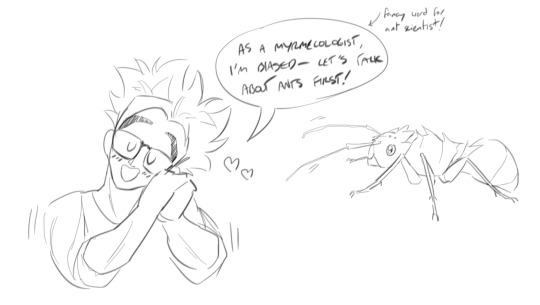
They're also the classic example of insect strength. I mean, what can't these little guys do?! They plow through the ground for their intricate tunnel systems, use their jaws to cut up everything from leaves to their enemies, and even build bridges and rafts by hanging from each others' bodies! The force of a trapjaw ant snapping its mandibles shut on a hard object can be enough to send itself flying several times its body length back, which looks silly but is a great escape route. And of course, they can lift tens of times their own body weight. To explain shortly, smaller animals have the potential to be very relatively strong because the surface area-volume ratio is more even at that scale. They weigh less and so have less to carry, so they can allocate strength to carrying larger objects than usual. A human-sized ant would be very strong, but not as proportionately strong as it was at its usual size. But let's move on from ants!
Apparently, the world's strongest insect and apparently overall strongest animal (once again relative to body mass!) is a dung beetle called Onthophagus taurus which has pulled more than 1,000 times its body weight in a study! This strength may have been sexually selected for due to males competing for females through competitions of brute strength. Beetles in the family Scarabaeidae are generally pretty strong, if you hold certain burrowing species in your hand you'll find that they can prise open your fingers quite easily!
The diabolical ironclad beetle (Phloeodes diabolicus) is another very strong beetle, but in a different way. Its exoskeleton, especially its elytra (the shell on its back), are incredibly durable and are constructed of layers that are meshed like puzzle pieces and cemented together by proteins that make them almost impossible to crush through natural means. The way the parts of the shell are interlaced also has given scientists a challenge to replicate their structure in human materials such as planes. Biomimicry is a crazy field! Also, you can imagine how notoriously difficult these things are to preserve for the... average entomologist.



(It's true. Entomologists, in the name of science, have run over these beetles with their cars and they just shrugged it off.)
I don't want to make this post too long (you're strong yourself for getting this far!), but I should give honorable mentions to our saltatorial (jumping) friends in the order Orthoptera, which are your grasshoppers, crickets, and katydids. Even less well-known (or rather less-respected) are the fleas, which I personally find fascinating because their closest relatives are likely scorpionflies! Who knew such a tiny, flat insect with no wings but powerful hindlegs could have evolved from potentially such a dainty-looking ancestor.

As for an alternate career path... I'm very grateful to be studying the insects I love so much, but I've always been interested in all the sciences. One of my backup plans was to become a researcher or lab technician at Capsule Corporation, which would have dealt largely with mechanical engineering. I wonder how that would have gone!

#insects#entomology#dragon ball#dragon ball z#dragon ball super#dragon ball super super hero#dbz#dbs#dbssh#gohan#son gohan#mod jay
89 notes
·
View notes
Note
Mantises are an order (Mantodea) of insects that contains over 2,400 species in about 460 genera in 33 families. The largest family is the Mantidae ("mantids"). Mantises are distributed worldwide in temperate and tropical habitats. They have triangular heads with bulging eyes supported on flexible necks. Their elongated bodies may or may not have wings, but all Mantodea have forelegs that are greatly enlarged and adapted for catching and gripping prey; their upright posture, while remaining stationary with forearms folded, has led to the common name praying mantis.
The closest relatives of mantises are termites and cockroaches (Blattodea), which are all within the superorder Dictyoptera. Mantises are sometimes confused with stick insects (Phasmatodea), other elongated insects such as grasshoppers (Orthoptera), or other more distantly related insects with raptorial forelegs such as mantisflies (Mantispidae). Mantises are mostly ambush predators, but a few ground-dwelling species are found actively pursuing their prey. They normally live for about a year. In cooler climates, the adults lay eggs in autumn, then die. The eggs are protected by their hard capsules and hatch in the spring. Females sometimes practice sexual cannibalism, eating their mates after copulation.
Mantises were considered to have supernatural powers by early civilizations, including ancient Greece, ancient Egypt, and Assyria. A cultural trope popular in cartoonsimagines the female mantis as a femme fatale. Mantises are among the insects most commonly kept as pets.
I love annoying you :)
Have a great day mantis-hater
Oh fuck you @eyedrinktwomp I'm gonna go kill a mantis cuz of this
7 notes
·
View notes
Text
my top five insect orders:
1. coleoptera (esp curculionidae)
2. lepidoptera
2. (yes it's tied) orthoptera
3. hymenoptera
4. hemiptera
8 notes
·
View notes
Text

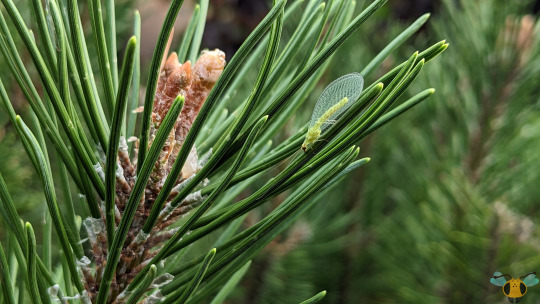

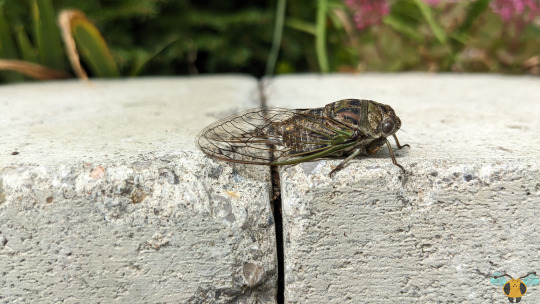
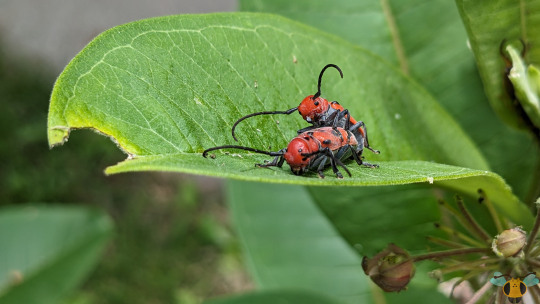
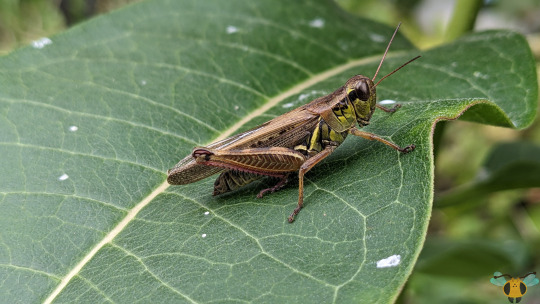
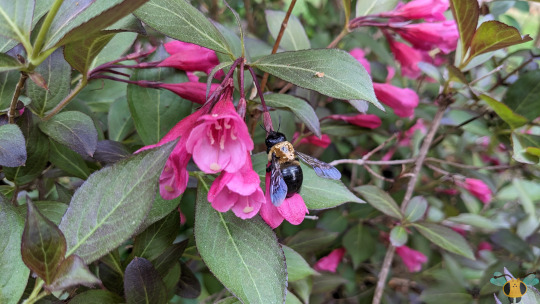
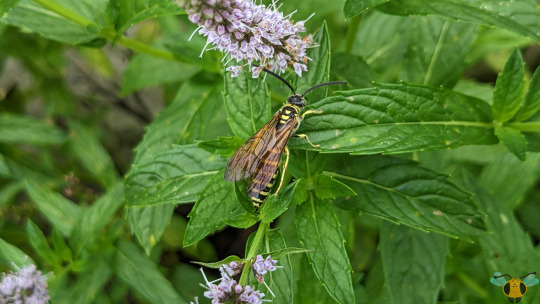
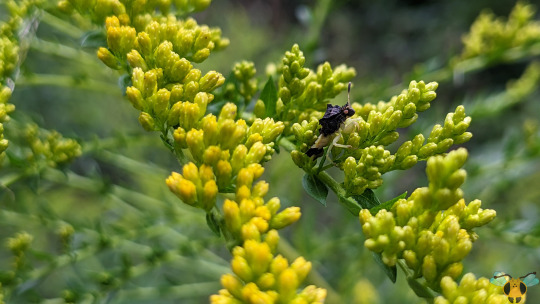
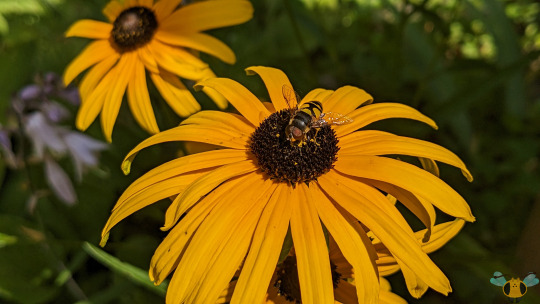
Insect Highlights of 2023
With the new year celebrations scheduled for this weekend, I thought it best to share some of my favorite insect specimens from this year, rather than one single typed of insect. The pictures here haven't been uploaded to the blog in a post, so today they can all share the spotlight. There are many familiar faces here and all of them are incredible and beautiful creatures. Hopefully there are even more insect delights and finds to enjoy in the upcoming year. To ring in the new year, we have the following insects:
Monarch Butterfly - Danaus plexippus - Order Lepidoptera (August 7th)
Green “Goldeneye” Lacewing - Chrysopa oculata - Order Neuroptera (July 26th)
Carolina Locust - Dissosteria carolina - Order Orthoptera (August 20th)
Dog-Day Cicada - Phymata pennsylvanica - Order Hemiptera (August 24th)
Milkweed Beetle - Tetraopes tetrophthalmus - Order Coleoptera (July 9th)
Red-Legged Grasshopper - Melanopus femurrubrum - Order Orthoptera (September 13th)
Eastern Carpenter Bee - Xylocopa virginica - Order Hymenoptera (June 5th)
Five-Banded Thynnid Wasp - Myzinum quinquecinctum - Order Hymenoptera (August 7th)
Jagged Ambush Bug - Phymata pennsylvanica - Order Hemiptera (August 20th)
Transverse Hoverfly - Eristalis transversa - Order Diptera (August 8th)
All pictures here were taken in 2023 with a Google Pixel 4.
Wishing everyone a very Happy New Year and a great 2024! And thank you everyone for making this a wonderful year of insects!
#jonny’s insect catalogue#ontario insect#beetle#butterfly#cicada#grasshopper#lacewing#fly#wasp#true bug#monarch butterfly#eastern carpenter bee#dog day cicada#five banded thynnid wasp#green lacewing#jagged ambush bug#transverse hoverfly#red legged grasshopper#carolina locust#milkweed beetle#2023#toronto#june2023#july2023#august2023#september2023#happy new year#happy new year 2024#nature#entomology
4 notes
·
View notes
Text
Top 10 instances of each taxonomic rank by number of named species
Data from Catalogue of Life (yes, I'm aware that taxonomic rank is largely arbitrary and that species boundary are fuzzy, especially outside of Eukaryotes; taxa within "quotes" are paraphyletic groups whose descendance encompasses others, e.g. "Reptilia" also contains the ancestry of Aves)
Largest Domains:
Eukarya (organisms with cell nuclei): 2.1 million species
Bacteria: 10,000 [currently named!] species
Archaea: 380 species
Largest Kingdoms:
Animalia or Metazoa (animals): 1.5 million species
Archaeplastida (green plants & kin): 380,000 species
Fungi (fungi): 160,000 species
"Protista" (all Eukaryotes that are not animals, plants, or fungi; Catalogue of Life splits from them the old "Chromista", but now that's not supported by morphology nor by phylogeny): 65,000 species
Largest Phyla:
Arthropoda (insects, crustaceans, spiders, &c): 1.2 million species
Angiospermae (plants with flowers): 350,000 species
Mollusca (clams, snails, slugs, and squids): 130,000 species
Ascomycota (various groups of fungi): 98,000 species
Chordata (vertebrates, lancelets, and sea squirts): 73,000 species
Basidiomycota (another group of fungi including most mushrooms): 53,000 species
Foraminifera (protists with calcareous shells): 50,000 species [this might count a great deal of extinct species]
Platyhelminthes (tapeworms & other flatworms): 23,000 species
Bryozoa (little colonial invertebrates): 21,000 species
Annelida (earthworms, leeches, & other segmented worms): 18,000 species
Largest Classes:
Insecta (insects): 970,000 species
"Magnoliopsida" (most flower plants): 260,000 species
Gastropoda (slugs & snails): 97,000 species
Arachnida (spiders, scorpions, and mites): 93,000 species
Liliopsida (a group of flower plants including grasses): 81,000 species
Malacostraca (crabs, shrimps, and some other crustaceans): 46,000 species
Agaricomycetes (mushrooms including agarics): 41,000 species
Dothideomycetes (another group of fungi): 32,000 species
Actinopterygii (ray-finned fish): 31,000 species
Bivalvia (clams, scallops, oysters, &c): 22,000 species
[Mammalia (mammals): 6000 species]
Largest Orders:
Coleoptera (beetles): 330,000 species
Diptera (flies & mosquitoes): 170,000 species
Lepidoptera (moths & butterflies): 160,000 species
Hymenoptera (ants, wasps, & bees): 120,000 species
Hemiptera (aphids, cicadas, & bedbugs): 100,000 species
Araneae (spiders): 50,000 species
Asparagales (orchids, onions, & agaves): 41,000 species
Asterales (daisies, dandelions, & sunflowers): 39,000 species
Orthoptera (crickets and grasshoppers): 30,000 species
Lamiales (mint, olives, and many herbs): 28,000 species
[Primates (lemurs, monkeys, & apes): 530 species]
Largest Families:
Curculionidae (weevils): 74,000 species
Staphylinidae (rove beetles): 67,000 species
Carabidae (ground beetles): 41,000 species
Cerambycidae (longhorn beetles): 36,000 species
Scarabaeidae (scarab beetles): 36,000 species
Asteraceae (most Asterales): 36,000 species
Orchidaceae (orchids): 31,000 species
Ichneumonidae (parasitoid wasps): 24,000 species
Fabaceae (beans): 24,000 species
Erebidae (a family of moths): 23,000 species
[Hominidae (great apes including humans): 8 species]
2 notes
·
View notes
Note
Cc theory part 3
Even though pirplexa's fashion sense would stereotypically associate him with coleoptera I think orthoptera is his favorite insect order. I think it is probably nostalgic and their fat bodies and high, almost self-destructive ambitions are charming to her. The ability of such wild creatures to occasionally find their way into the smoke and cement wastelands of the urban environment is probably very endearing to him. He probably lets them hitchhike in her car until he gets somewhere greener.
this is true and canon except pirplexa does not have a car she rides a bicycle everywhere
6 notes
·
View notes